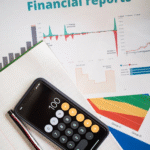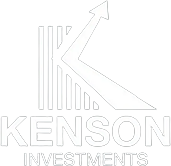In recent years, the financial world has witnessed the convergence of traditional asset classes with blockchain technology. One of the most compelling developments is the rise of tokenized bonds, digital representations of fixed-income securities issued and managed on blockchain infrastructure. As tokenized treasuries and corporate debt instruments begin to rival their conventional counterparts, many informed market participants are asking: Are tokenized bonds the future of fixed income?
This blog dives deep into the differences between tokenized and traditional bonds, assessing benefits, risks, compliance considerations, and the outlook for adoption among institutional and retail sectors.
What Are Tokenized Bonds?
Tokenized bonds are digital assets issued on blockchain platforms that represent real-world debt instruments. They offer exposure to government treasuries, corporate bonds, and other fixed-income securities—only in digital format. These tokens are typically backed 1:1 by the underlying asset, offering the same yield and maturity but allowing real-time settlement, 24/7 market access, and programmable features via smart contracts.
In contrast, traditional bonds are issued through centralized entities and require clearinghouses, intermediaries, and lengthy settlement periods (T+2 or T+3), leading to higher transaction costs and less liquidity.

Institutional Momentum Behind Tokenized Bonds
Institutional adoption of tokenized fixed-income products is gaining traction. As of early 2024, over $1.5 billion in tokenized U.S. Treasuries are circulating across major platforms like Franklin Templeton, WisdomTree, and Ondo Finance, according to data from 21.co. These instruments are being embraced not only for yield but also for blockchain-native features such as fractional ownership and on-chain liquidity pools.
In fact, BlackRock’s entrance into the tokenized treasury space via its BUIDL fund has been seen as a major signal of confidence in blockchain-enabled fixed income. The fund surpassed $300 million in assets within its first quarter, reinforcing the growing role of private investment funds in digital debt instruments.
Such developments are being supported by global digital asset consulting firms, which help financial institutions build secure infrastructure for issuing and managing blockchain-based securities. These transitions also rely on digital asset strategy consulting firms that guide banks, fintech startups, and custodians through compliance frameworks and tokenization standards.
Advantages of Tokenized Bonds
1. Efficiency and Transparency
Tokenized bonds eliminate multiple layers of intermediaries, reducing fees and improving transparency. Settlements occur in real-time on-chain, allowing for faster capital deployment and reduced counterparty risk.
2. Fractionalization and Global Access
Digital infrastructure allows for fractional bond issuance, which lowers the barrier for participation and broadens investor access globally. This is particularly attractive for emerging markets and startups engaging blockchain asset investments consultants to issue debt in more accessible forms.
3. Programmability
Smart contracts enable automated coupon payments, compliance checks, and liquidity routing. Tokenized bonds can be coded to follow jurisdictional regulations, making them ideal for cross-border issuance with embedded digital asset consulting for compliance.
Regulatory Landscape: A Catalyst, not a Barrier
Skepticism around tokenized bonds often stems from regulatory uncertainty. However, recent developments have shifted the narrative.
In March 2024, the SEC approved a no-action letter for tokenized bonds issued under Regulation D, providing a path forward for compliant offerings in the U.S. This was followed by MiCA (Markets in Crypto-Assets) implementation in Europe, which classified tokenized securities under clearly defined categories, enabling institutional players to issue digital bonds across EU jurisdictions with regulatory certainty.

Regulatory frameworks have also attracted the attention of real world asset consultants, who specialize in helping firms tokenize physical or off-chain assets—such as real estate and treasuries—into compliant digital instruments. These services are expanding alongside RWA DeFi investment consultants, bridging the gap between DeFi protocols and regulated capital markets.
Risks and Considerations
While tokenized bonds offer promising efficiency, they also pose unique challenges:
- Custody Concerns:Digital assets require secure wallets and key management infrastructure. Institutions often rely on regulated custodians or crypto asset management solutions to safeguard their holdings.
- Platform Risk:The blockchain on which a bond is issued matters. Ethereum-based tokens may be more widely adopted, but smaller platforms could pose interoperability or liquidity challenges.
- Legal Enforceability:Smart contracts are still being tested in courts. Clarity around legal frameworks for dispute resolution in digital securities is still evolving.
Despite these risks, digital asset management companies and compliance-focused consultants are rapidly closing the gap by building robust platforms and assisting with investment analysis and portfolio management for digital fixed-income products.
Tokenized Bonds in a Diversified Portfolio
For informed market participants, tokenized bonds offer several portfolio-level benefits:
- Liquidity Flexibility:Tokenized bonds can be traded around the clock and may access liquidity pools within DeFi ecosystems. This enables tactical rebalancing and improved execution.
- Yield Curve Exposure:Platforms now offer tokenized versions of short-term, mid-term, and long-duration treasuries. Portfolio managers working with portfolio management consultants can now build custom laddering strategies entirely on-chain.
- Integration with DeFi:Innovations like tokenized treasuries used as collateral in DeFi protocols (e.g., MakerDAO’s RWA vaults) offer hybrid yield opportunities—balancing real-world yield with crypto-native incentives.
Outlook for Adoption
The future of tokenized bonds depends on two core pillars: regulatory clarity and infrastructure maturity.
- Government Support:Central banks and regulators are moving faster than expected. For example, the Monetary Authority of Singapore launched Project Guardian, a framework supporting tokenized fixed income products for institutional finance.
- Platform Expansion: Interoperability solutions are improving. With firms like Chainlink and Fireblocks leading institutional-grade integrations, tokenized bond markets are becoming more connected to traditional rails.
- Increased Consulting Demand:The rise of digital asset portfolio management has created opportunities for specialized firms offering digital asset investment solutions to banks, sovereign funds, and pension managers seeking compliant exposure to blockchain-based yield products.
Navigating Fixed-Income Innovation
As digital transformation accelerates across capital markets, understanding the shift from traditional to tokenized bonds is essential. Kenson Investments helps informed market participants stay ahead through accessible educational resources and compliance-first awareness around emerging digital assets.
Whether you’re exploring DeFi finance consulting services, need insights from a stablecoin investment consultant, or want to understand RWA tokenization investment consultants, Kenson Investments offers access to a network of trusted Digital Asset Specialists who focus on education and market awareness.
Disclaimer: The information provided on this page is for educational and informational purposes only and should not be construed as financial advice. Crypto currency assets involve inherent risks, and past performance is not indicative of future results. Always conduct thorough research and consult with a qualified financial advisor before making investment decisions.
“The crypto currency and digital asset space is an emerging asset class that has not yet been regulated by the SEC and US Federal Government. None of the information provided by Kenson LLC should be considered as financial investment advice. Please consult your Registered Financial Advisor for guidance. Kenson LLC does not offer any products regulated by the SEC including, equities, registered securities, ETFs, stocks, bonds, or equivalents”














